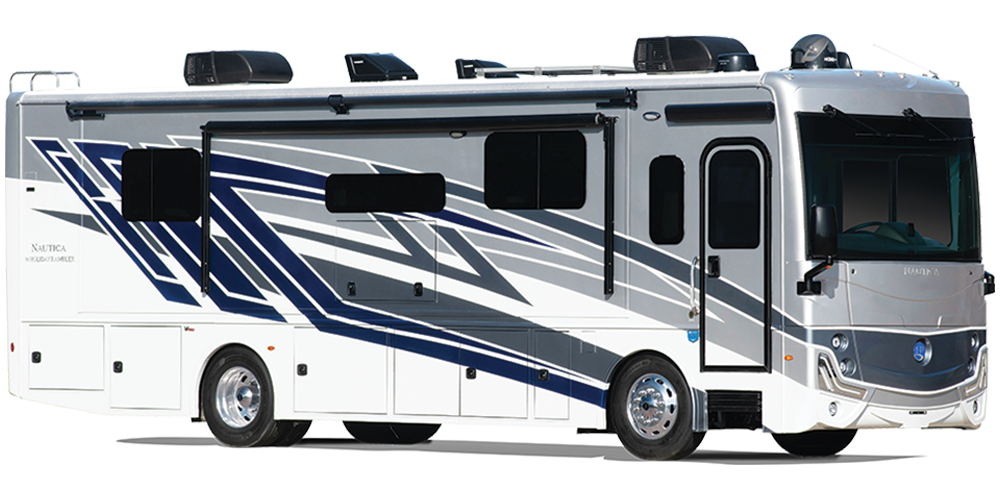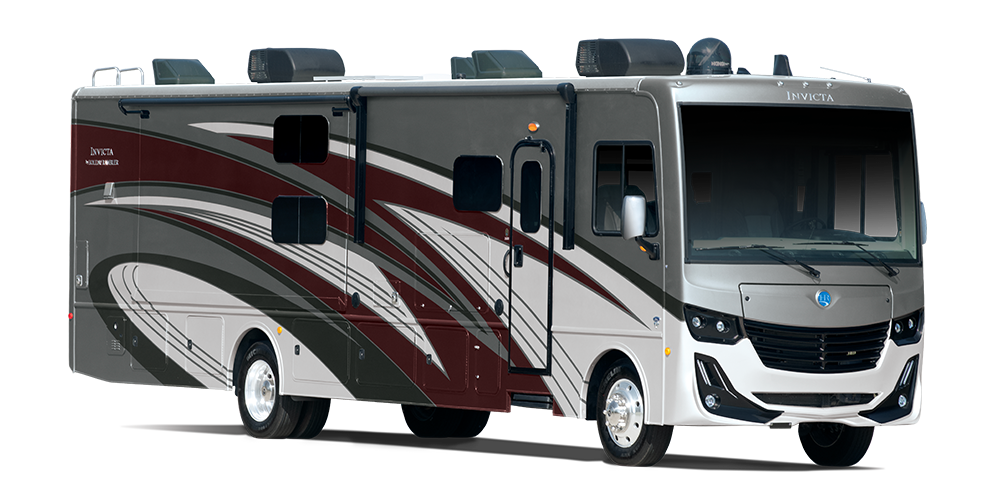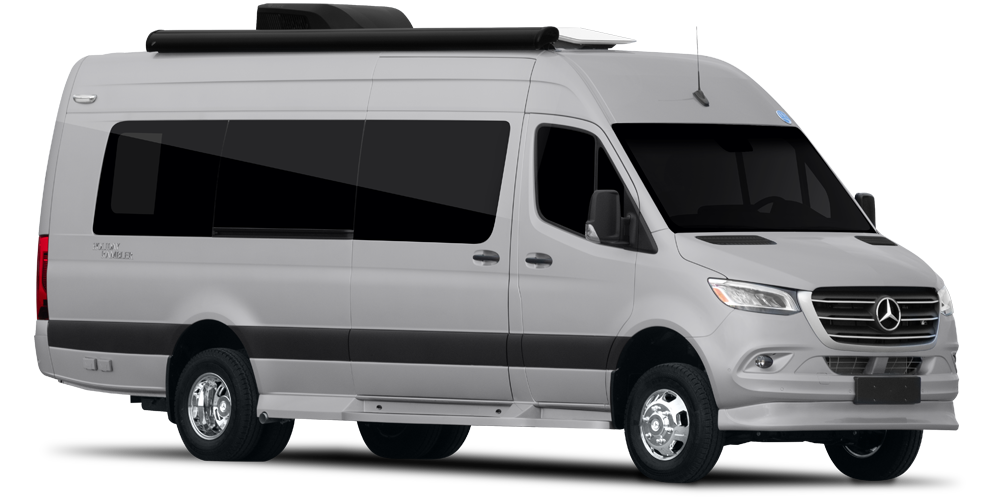Adventure Awaits…Tips and Tricks from the Road
By: Adventurtunity Family
In our two hundred and seventy days of traveling, we have covered over 6,000 miles visiting thirteen states. While adventuring, our Vacationer has stayed in 21 campgrounds, 2 driveways, 6 Harvest Hosts, and 2 boondocking locations. We’ve had so many incredible adventures so far and learned A LOT!
We wanted to share with you our tips and tricks! These work really well for us and may work for you too in all your RV adventures!
Plan Ahead
We plan ahead in a variety of ways, but our two biggest areas we plan are where we’re staying the night and the route we are taking to arrive there. Besides the internet, we use a variety of apps as resources to assist with our planning. When it comes to booking campgrounds, we will typically search online and use the Campendium or Free Roam apps. Typically, we try to keep our driving time between locations to 3-4 hours. If we are covering longer distances, we like to stay at a Harvest Host to break up the trip. If you aren’t familiar with this program, it’s a yearly membership where you can stay one night for free at participating wineries, breweries, museums, farms, golf courses, distilleries, and other businesses. The program just asks that you support the host by participating in what they offer. There is a Harvest Host app that works really well and includes useful details on each host.
Boondocking was completely new to us, as were most things when we first set out. To date we have only boondocked a handful of times but absolutely love it! At first, boondocking was a little intimidating. The concept of staying on public land with zero hookups was alluring yet foreign to us. Thankfully we happened upon a boondocking spot by accident where we felt confident in giving it a try. Our plan was to stay for three nights, but we loved it so much we stayed for seven! We have since found Recreation.gov and Free Roam, two apps that work well for helping to find boondocking locations. For us, the more we boondock the more we feel comfortable and confident doing it.
Google Maps satellite view might be our most used app of all. Our Vacationer is 37 feet and we flat tow a Jeep Wrangler. Which means backing up while towing is not possible for us. If we were to get into a tight situation where we couldn’t turn our entire rig around, we would have to unhook the Jeep, which isn’t exactly ideal. Thankfully this hasn’t happened yet because of our planning. We typically prefer to follow the truck routes when possible. And when boondocking if it works out, we take the Jeep alone to scout the route before bringing our RV through.
Saving Money on Your Nightly Rate
When we first started our journey, we were moving around every 3-4 days. Moving so often made it hard to work, experience, and rest in the places we were staying; not to mention, it was exhausting and expensive. We have a few memberships like Good Sam and KOA where you can save 10% off your nightly rate. For us, the memberships have paid for themselves and then some, so we like to have those but what we have found to bring the most savings is weekly and monthly stays. Many campgrounds offer a weekly or monthly rate which is usually significantly less than the nightly rate for the days you are staying. We have stayed at campgrounds with full hookups for as low as $500 a month. When we first started out, we were paying $500 for a week! We have also seen a few campgrounds offer six nights and get the 7th free. If you are really looking to adventure on a budget, you can stay in National and State parks for $14-$24 a night for up to 14 nights.
Fill Your Tanks
We’ve made it a habit to constantly monitor and maintain our tanks. We like to keep both our Vacationer and Wrangler above half a tank of gas at all times. While traveling through the east coast it didn’t seem as necessary, but still a good habit to keep. Out west, on the other hand, where gas stations can sometimes be rather spread out, it’s been a lot more applicable. Because of this habit, we’ve rarely had to plan our gas fill-ups, but when we do, we use the Gas Buddy app. When in doubt, fill up when traveling through the west. We certainly have a new appreciation of gas mileage and the elements that affect how much you burn in an RV.
We also keep our fresh water tank 1/3 to 1/2 full. Of course, you want it close to full if you are boondocking, but we have found it to be helpful on travel days and at campgrounds too. We’ve stayed at a few campgrounds in the off-season that happened to be doing maintenance and would need to intermittently turn off the water. Of course, it would happen when we were doing dishes or wanting to shower. But with having our own water it wasn’t an issue for us. Unexpected things happen whether its detours, changing plans or other things. So, it’s always a good idea to have some water in your fresh tank as you’ll never know when you may need it.
In addition to our gas tanks and fresh water tank, we also keep our propane filled. Our propane tank is built into our Vacationer, so we need to manage how much we use, especially during colder months. If we run out of propane in the middle of a long stay, we’d need to close everything up, unhook, and drive to refill the LPG. So, making sure its full when we arrive, or filling up before we get to our site, helps to minimize the need to do that.
Make a List, Check it Twice
Travel days can get hectic, especially if you haven’t figured out your routine yet. It took us a while to get into a rhythm of what needs to happen, both inside and outside, before we hit the road. But when we started staying at places for a month and traveling less frequently, that routine and rhythm got out of whack. So, we have found that having a list and double checking it prior to departure helps to minimize the forgotten steps. Trust us when we tell you, it’s no fun to clean up after “lock the fridge” gets forgotten and a sharp turn sends the contents flying onto the floor.
Having a list also helps to keep you honest on some of the more important things as well. Crucial things like checking tire pressure, testing the lights on your towed vehicle, topping off fluids and other things can get mundane. And when they are usually okay every time you check them, skipping them can get too easy with an “ahh, it’s fine” thought. But if you have your list and commit to checking off each item, you’re more likely to run through all the safety checks and other tasks. Even if you’re in a hurry, make sure to check all the items on your list and it will help to give you peace of mind, prevent mishaps, and avoid situations like wiping splattered ketchup off every surface within 10 feet of your fridge. Just saying.
While we’re on the subject of travel day, always make sure to have a quick and easy meal on hand for travel days. Whether it’s a frozen pizza or a pre-prepped meal that’s easy to throw in the microwave, not having to worry about making dinner has been huge for us on travel days. The last thing you want to worry about when you arrive is cooking after getting everything set up. Even if you plan to arrive earlier than dinner time with plenty of time to set up, plans change, and delays happen so you may arrive later than planned. And you’ll be so happy you have an easy meal to serve your family with minimal effort!
Give Yourself Driving Time
On travel days we prefer to keep our driving time under four hours, but we have driven as much as six. We typically average about 4.5 hours for travel days. One thing we learned pretty quickly is that we are slower than “map app time” once you factor in towing and route terrain. We’ve found that we tend to be 30 minutes to an hour longer than what the directions say the estimated time should take.
We try to make our travel days relaxing without pressure to arrive by a certain ETA. Which gives us the opportunity to pull off at overlooks or towns if they pique our interest. Our goal is to enjoy the journey just as much as the destinations! Of course, it’s not always easy to pull our rig over on the fly but many National Parks and scenic areas provide pull off areas to accommodate RVs. It’s a great break for fresh air, stretching your legs, and an epic photo opportunity or two!
All in all, our biggest advice is taking your time, enjoy the journey and triple check everything! We hope a few of these tips and tricks come in handy for you and your family as you venture out on your next adventure.

Most Popular Blogs
Servicing Your Coach at the Factory Service Centers
2024-01-02T21:30:11+00:00December 18, 2023|
Previously we shared a blog post about several ways to maintain and service your coach [...]
Winter Camping Tips
2024-01-02T21:30:11+00:00November 28, 2023|
Winter is coming! Which means we all have some big decisions to make regarding our [...]





















